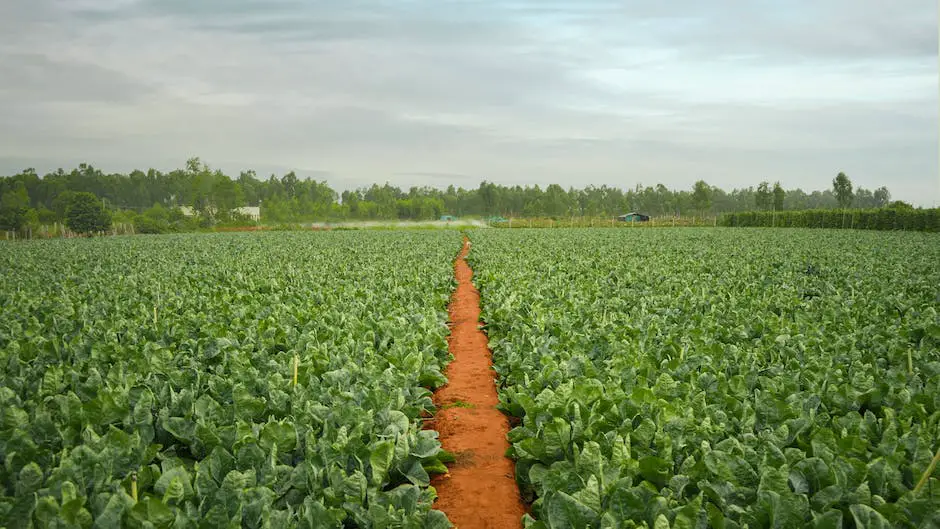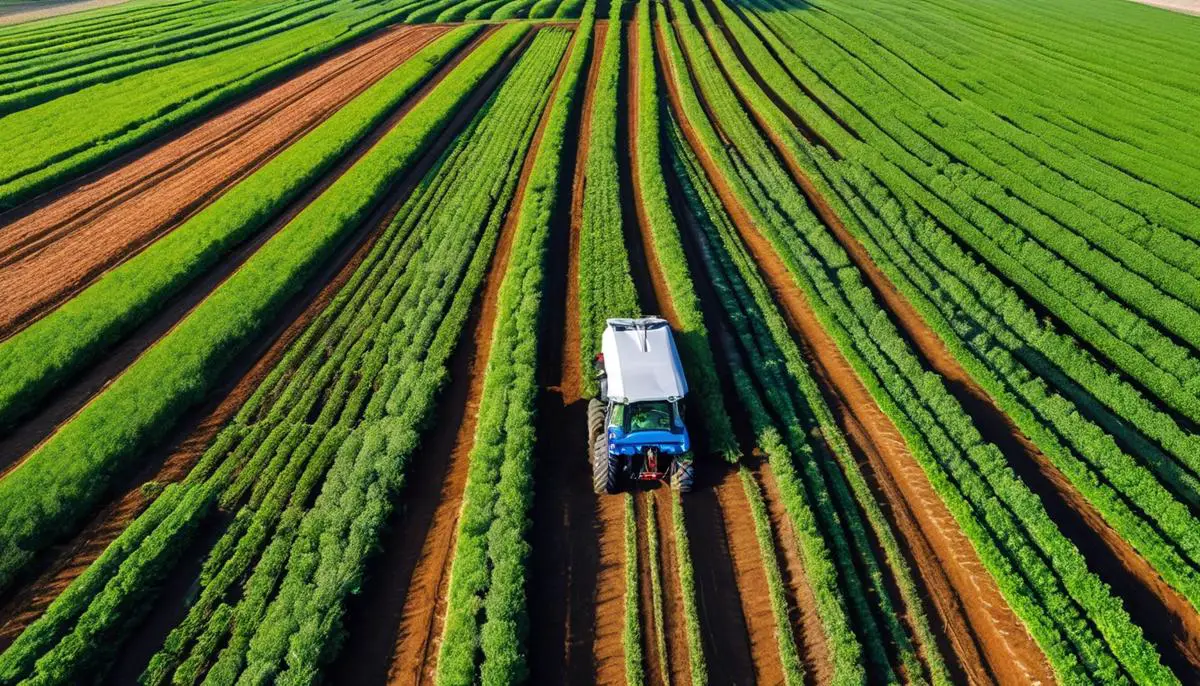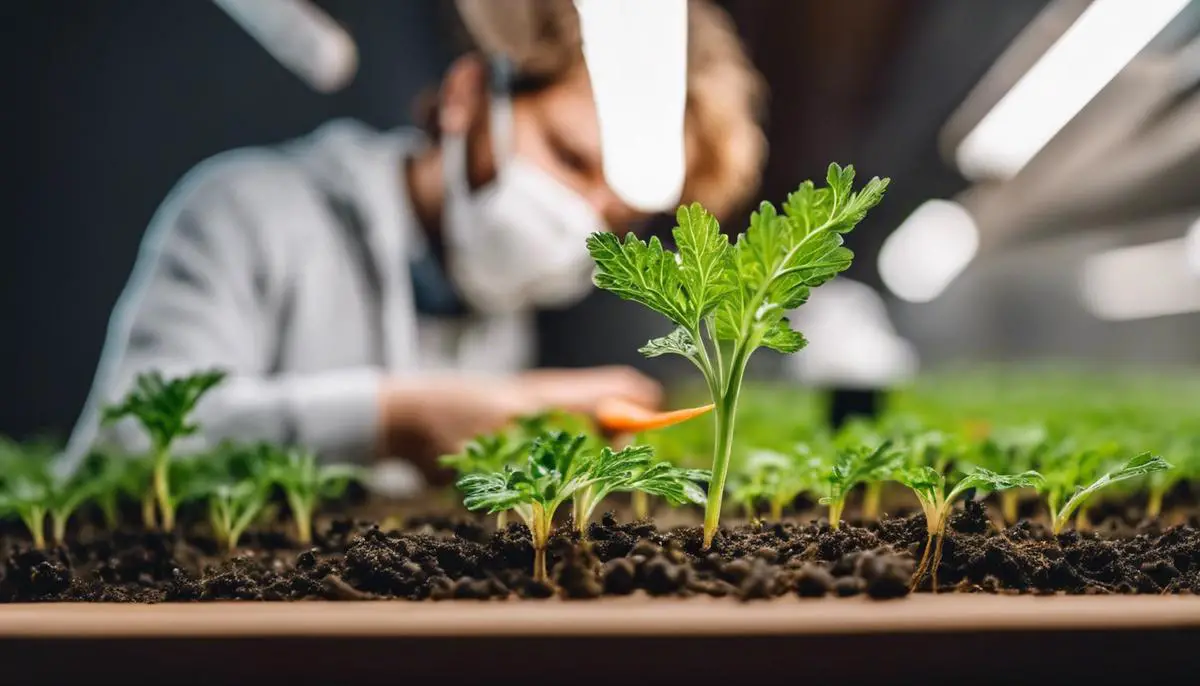The journey of a single carrot from seed to harvest is filled with numerous challenges, primarily posed by an array of pests and diseases. Understanding these potential threats is an integral part of successful carrot cultivation, as early identification and effective management can be the deciding factors between a flourishing crop and a devastated field. This investigative discourse delves into a comprehensive guide on the Identification of Carrot Pests, establishing a solid foundation on their physical attributes, life cycles, and potential damage to crops. Furthermore, the intimate biology of Diseases in Carrot Plants is placed under the microscope, exploring their symptoms, propagation tendencies and effective mitigation strategies. A broader outlook is adopted as we consider the Impact of Pests and Diseases on the Growth and Yield of carrots, to highlight the delicate balance between maintaining crop health and yielding a profitable harvest. Lastly, the principles of Integrated Pest and Disease Management are dissected to provide sustainable solutions in the face of ongoing agricultural problems.
Identification of Carrot Pests
Title:
Identifying and Addressing the Most Common Pests Afflicting Carrots
Reader Poll: What online courses would interest you?
As one delves into the world of agronomic research, carrots Daucus carota L, a multi-purpose root vegetable, emerge as organisms of paramount interest. Observations from various scientific studies underscore the nutritional and economic importance of carrots, thereby underscoring the significance of studying pests that have a detrimental impact on their growth and development.
A chief antagonist in this respect is the Carrot Rust Fly, Psila rosae, an insect that gnaws on the roots of the carrot, causing rust-colored furrows, commonly termed ‘rusting.’ Their larvae typically develop inside the carrot roots, leading to significant damage. Robust monitoring measures such as deploying yellow water traps can lead to early identification of these pests, thereby mitigating their damage.
Perhaps somewhat less known but no less harmful are the Carrot Weevils, Listronotus oregonensis, and their larvae. Their feeding patterns result in irregular patches and tunneling evidence in the carrots. Crop rotation and field sanitation are effective strategies for controlling this pest.
Subscribe to our newsletter!
Another noteworthy pest is the Aphid, especially the green peach aphids and the carrot Willi aphids. These insects cause severe distortions and yellowing, mainly of the foliage. Early detection of aphid infestation can be achieved by establishing integrated pest management systems, which include the simultaneous use of biological, cultural, and chemical control options.
Regarding diseases, Alternaria leaf blight emerges as one of the most prominent diseases adversely affecting carrots. Signs include leaf spotting and blighting. Infected carrots have dark, sunken lesions typical for this infection. Early detection can be made possible by frequent and keen inspection of crops.
Pestalotiopsis leaf blight also holds significant importance in carrot disease studies. Infested carrots exhibit reddish brown leaf spots, yellowing, and leaf death. Crop inspection and effective fertigation can assist in managing this disease.
Understanding pests and their manifestation on carrots requires not just theoretical knowledge but a keen eye and intuition cultivated through years of practice. To preserve the vitality of carrot crops and ensure their prosperous growth, it is essential to continually stay updated with advancements in pest and disease management, routinely monitor crops, and take appropriate control measures at the advent of any infestation.

Understanding Diseases in Carrot Plants
Identifying and Managing Primary Diseases Affecting Carrot Crops: Additional Afflictions
Carrot crops can be plagued by a diverse array of diseases, shaping a multifaceted challenge for farmers worldwide. While primarily affected by pests such as the Carrot Rust Fly, Carrot Weevils, and Aphids, additional diseases warrant attention within the carrot cultivation setting.
One significant but often overlooked malady is the Black Root Rot. Fundamentally a fungal disease, it is primarily caused by two agents: Thielaviopsis basicola and Rhizoctonia solani. Black lesions appear along the length of the carrot, turning the taproot black. As the disease progresses, lesions increase in size, often leading to the entire carrot becoming blackened and pithy in texture. Management strategies include use of disease-resistant hybrids, sterilization of soil, appropriate crop rotation, and timely utilization of fungicides.
Furthermore, Cavity Spot, a disease caused by two species of fungus- Pythium sulcatum and Pythium violae, can wreak havoc on these valuable crops. Initial symptoms include elliptical cavities on the carrot’s surface. As the disease advances, these cavities deepen, causing a significant reduction in marketable yield. By opting for resistant cultivars, employing regular crop rotation, and applying adequate fungicides, the severity of this disease can be minimized.
Fusarium Dry Rot, provoked by the fungus Fusarium spp., opens up the carrot crop to more infirmity. Carrots affected by this disease exhibit signs such as wilting, yellowing of leaves, and elongated, sunken, tan or blackish lesions on the roots. To combat Fusarium Dry Rot, one might wish to utilize disease-tolerant carrot varieties, effectively manage soil moisture, and further explore chemical control options.
Finally, Southern Blight, incited by the soil-borne fungus Sclerotium rolfsii, rounds up the list of significant carrot diseases. Telltale signs of this disease include a fungus mat on the soil, wilting plants, and the presence of tiny, spherical sclerotia that resemble mustard seeds. Management generally involves soil sanitation, suitable crop rotation, and fungicidal treatments.
Forwarding an understanding of these diseases, their causes, symptoms, and management, can place farmers in a more advantageous position. Continuous research, married with on-field practical strategies, forms the cornerstone of keeping these afflictions at bay. While challenges are formidable, the collective wisdom of scientific, academic, and farming communities would undeniably provide the much-needed impetus to navigate these complex terrains. Increasing food security depends largely on our ability to mitigate such agricultural challenges, a testament to our unwavering commitment to safeguarding the world’s food basket. Humanity’s ability to innovate has served us well in the past, and undoubtedly, it will continue to do so in the future.

Impact of Pests and Diseases on the Growth and Yield
As we delve further into the universe of carrot-related afflictions, we come across the rather sinister-sounding Black Root Rot (Thielaviopsis basicola). This disease inducer occupies soil and plant debris, lying dormant only to strike when conditions unfurl to its liking. The characteristic symptom is an ominous black discoloration of carrot roots. To manage Black Root Rot, strategies like solarization, soil fumigation, and crop rotation, along with planting resistant varieties, are applied to mitigate its ravaging effects.
Among the pathogens of special mention is the Pythium violae, the causative agent of Cavity Spot. This disease manifests as deep-set, circular lesion on carrot roots, diminishing their commercial value drastically. Disease control strategies, in this case, tend to focus on the modification of soil conditions and farming practices. Lime amendments to increase soil pH, the use of certain biocontrol agents, and rotational cropping have shown promising outcomes in managing Cavity Spot.
We then arrive upon Fusarium Dry Rot, caused by Fusarium spp. This fungal agent leaves a devastating impact on carrots, with symptoms ranging from root discoloration to vascular browning and eventual decay. Fusarium Dry Rot can be mitigated by employing techniques such as seed treatment, the use of resistant varieties, crop rotation, and soil fumigation.
Another formidable disease is Southern Blight, incited by Sclerotium rolfsii, obliterating seeds and seedlings and affecting mature carrots by girdling them at the soil line. The control of Southern Blight involves stringent sanitation practices, soil treatment, crop rotation, and use of disease-free planting materials.
Examining and managing these primary diseases is of the essence in maintaining healthy carrot crops. The blend of meticulous research and practical strategies forms a bulwark against these diseases, reinforcing the capacity of carrots to resist and recover from such invasions.
The process of addressing these agricultural challenges is a shared responsibility, with the scientific and academic communities pacing alongside the farming sector in steadfast harmony. The continuous exchange of knowledge illuminates the pathway to solution-bearing practices, endowing us with tools to efficiently combat these afflictions.
The overarching significance of these endeavors is emblematic of the tie between mitigating agricultural challenges and the larger aim of food security. The strategic control and management of carrot pests and diseases contribute to a stable pipeline of food, aiding the fulfillment of a just and nutritious diet for burgeoning populations worldwide.
Furthermore, leaning on innovation is paramount. Novel practices enrich our abilities to counter these challenges head on, paving the way forward in the sphere of food production. This not only establishes resilience in crop cultivation but also ensures the consistent provision of essential dietary staples, such as carrots. After all, nothing quite symbolizes human triumph like the successful taming of the intricacies of nature.

Integrated Pest and Disease Management
In expanding the discourse on sustainable integrated pest and disease management strategies in carrot cultivation, it is imperative to spotlight the interconnection between scientific research, practical farming techniques, and the holistic well-being of the agricultural community.
Biological and Biorational Control Methods represent a significant step forward in our quest for sustainable pest management. These methods leverage a pest’s natural enemies, microbial pathogens, or semiochemicals produced by pests themselves to regulate a pest population. Predatory insects, mites, and nematodes, as well as entomopathogenic fungi, bacteria, and viruses, can suppress pests in a manner that’s conducive to the ecosystem’s balance.
Predaceous mites, for example, can be deployed as biological control agents against carrot rust mites. These predatory mites feed on pestiferous mites, reducing their negative impact on carrot cultivation. It exemplifies how judiciously harnessing natural predator-prey relationships can be instrumental in sustainable integrated pest management.
For controlling soil-borne diseases, deploying Soil Solarization proves effective. This non-pesticidal method, involving the capture of solar energy to heat soil, can control soilborne plant pathogens including nematodes, weeds, and even insects. The beauty of it lies in the fact that it concurrently restores soil health and fertility.
Biological Soil Disinfestation (BSD) is another groundbreaking technique for controlling soil-borne pathogens and pests. This method introduces fresh organic matter into the soil, which upon decomposition, creates conditions unfavorable to pathogens and pests. Research has shown this method to provide positive results, protecting carrot crops from significant soilborne diseases such as black root rot, cavity spot, and Fusarium dry rot.
Biofumigation, utilizing high-glucosinolate-content crops like mustard plants, harnesses naturally-occurring compounds that are suppressive to a variety of soilborne pathogens and pests. Incorporating biofumigants into rotation can not only mitigate recurring disease and pest challenges but also enhance soil organic matter and microbial diversity.
Furthermore, Breeding for Resistance constitutes a crucial element in minimising disease impact. Utilizing naturally-resistant varieties can decrease the pathogen load and subsequent crop loss. Intensive breeding efforts are required to introduce broad-spectrum resistance into carrot varieties, particularly against diseases such as Alternaria leaf blight, Pestalotiopsis leaf blight, and Fusarium dry rot, amongst others.
It is crucial to appreciate that fighting against pests and diseases in carrot crop cultivation is not a solo act. It is a collaborative, concerted effort between researchers driving technological breakthroughs, governmental agencies setting up regulatory guidelines, and farmers implementing effective practices.
The imperative for sustainable agricultural practices has never been more pressing. Balancing our needs for food security and environmental conservation calls for a shift from merely proficient to genuinely enlightened agricultural practices. Leveraging the power of science, technology, and a deep understanding of our ecosystem’s delicate symphony is a significant stride in the right direction. In essence, the sustainability of our food production hinges upon the perception that our actions are, indeed, pivotal in shaping the harmony of nature’s grand opera.

Adopting a holistic approach towards agricultural challenges in carrot farming necessitates a thorough understanding of carrot pests and diseases. The sustainability and profitability of carrot farming significantly depend on the successful implementation of integrated pest and disease management practices. This inquiry into the microscopic world of carrot diseases and menacing pests equips us with the necessary knowledge to preemptively intervene and salvage the crop yield. In the world of carrot farming, knowledge truly is power – the power to identify threats, act accordingly, and ultimately, ensure the continued survival of our treasured orange root crop. Overcoming adversities in farming, like in life, requires accurate identification, a deep understanding, and a strategic plan to curb their impacts. Let us foster respect for these microscopic organisms that challenge us in the field, and continue to evolve and adapt to the ever-changing landscape of carrot cultivation.

